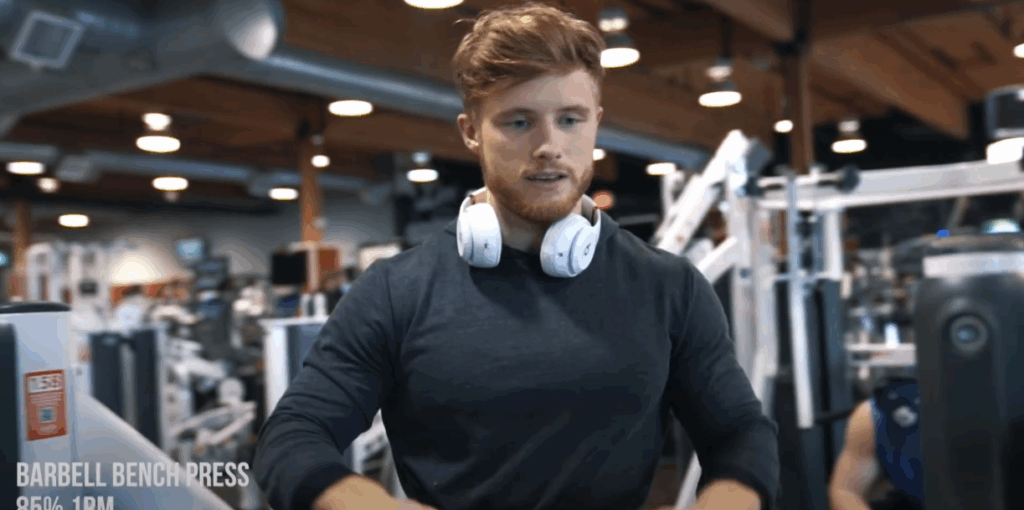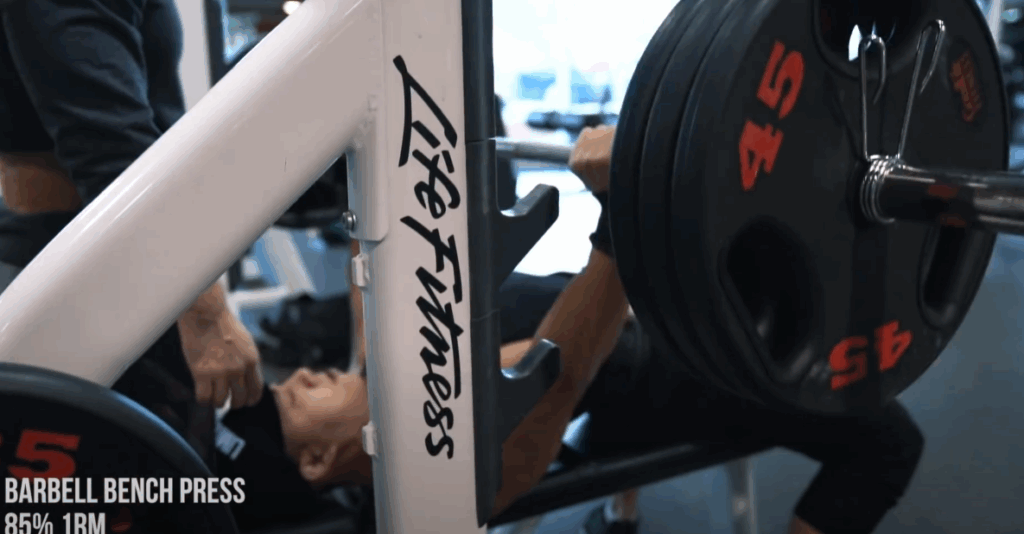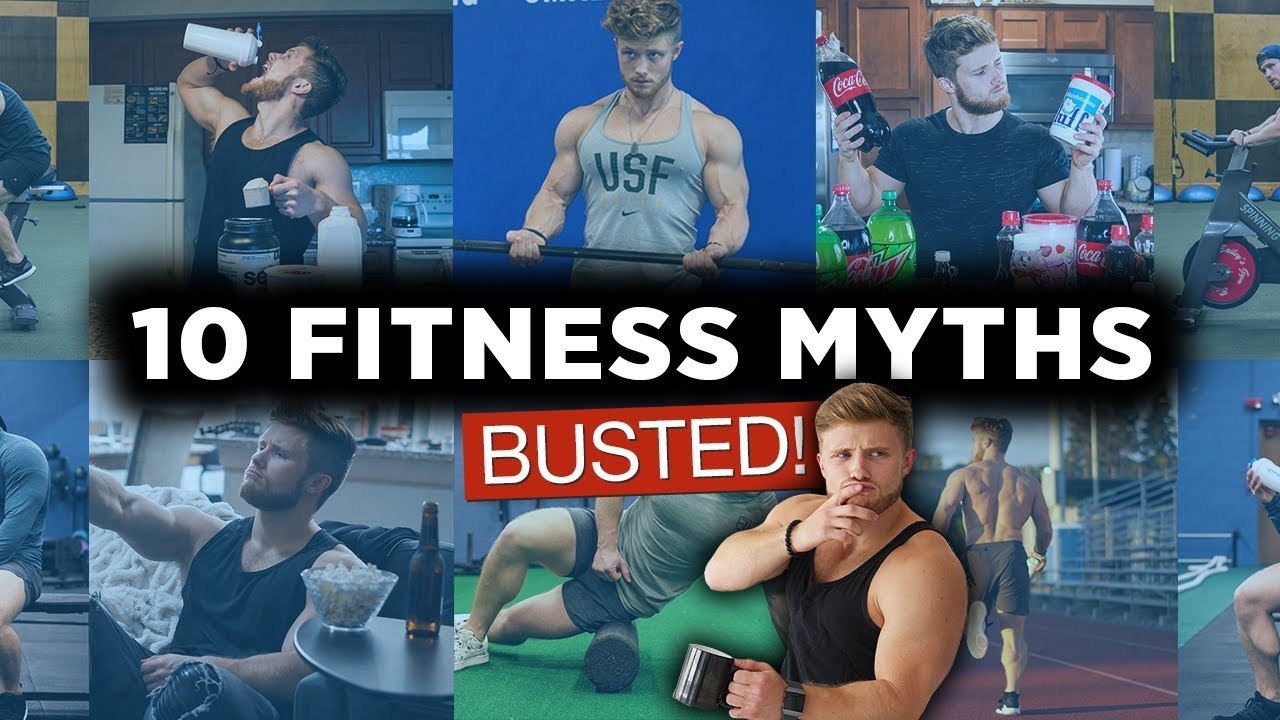Welcome back, fitness enthusiasts! Today, we’re diving into a complete “push” workout — a session designed to target the chest, shoulders, and triceps. This guide walks you through each phase of the workout, with practical tips, equipment recommendations, and strategic execution cues to maximize your results.
This session is from Week 4, Day 2 of a push-pull-legs (PPL) split, an extremely effective structure for building strength and muscle size. Let’s walk through what this kind of push day looks like, with a few additional insights sprinkled in.

1. Neck Training Warm-Up: The Overlooked Essential
Before heading into any major lifts, it’s important to prep the entire body—yes, including the neck. While not often included in standard programs, direct neck work can enhance posture, reduce injury risk, and support upper-body strength.
For this, I used a neck harness device—an often misunderstood piece of equipment that’s incredibly effective when used correctly. With resistance attached, I perform neck extensions in a slow, controlled manner. Around 2–3 sets of 15–20 reps does the trick. The goal here isn’t to max out but to activate those smaller, stabilizing muscles.
If you’re new to neck work, start light and ensure you’re warming up properly with gentle head rotations and mobility drills before adding resistance.
2. Barbell Bench Press: Building Max Strength
Target: Chest, Front Delts, Triceps
Sets/Reps: 3 x 4 @ 85% of 1RM
The workout begins with the classic barbell bench press — a cornerstone in any push-focused routine. I use about 85% of my one-rep max (in this case, around 295 lbs) and perform three working sets of four reps.
Pro Tip: Treat your warm-up sets seriously. Mimic your working set technique exactly to “program” your movement patterns for when it gets heavy. That means explosive drive off the chest, stable foot positioning, and tight form from the first warm-up to the last rep of your top set.
3. Gear Up: Lifting Accessories That Help Performance
Your equipment can make a noticeable difference in performance and safety. Here’s what I use and why:
- Lifting Shoes (Adidas Powerlifting style): A raised heel helps create a solid foot drive and keeps you grounded during heavy pressing.
- Weightlifting Belt: Increases intra-abdominal pressure, helping brace your core during big lifts.
- Wrist Wraps: Stabilize the wrist joint under heavy loads, ensuring consistent bar path and reducing the risk of injury.
These tools aren’t mandatory, but for intermediate to advanced lifters, they offer small performance gains and added stability.
4. Seated Dumbbell Shoulder Press: Target the Delts
Target: Anterior Deltoids
Sets/Reps: 3 x 8–10
Next up is the dumbbell overhead press. Be strategic with equipment placement—position your bench close to the dumbbell rack to avoid unnecessary fatigue from lugging weights around.
Use a controlled tempo. Lower the dumbbells slowly and press explosively, maintaining tension throughout. Engage your core to avoid excessive back arching and ensure the movement isolates the shoulders, not your lower back or traps.

5. Weighted Dips: Chest and Triceps Mass Builder
Target: Lower Chest, Triceps
Sets/Reps: 3 x 6–10 (RPE ~7)
Weighted dips are a phenomenal compound exercise, provided they’re done with proper form. Slightly lean forward (about 15 degrees), keep your elbows at a 45-degree angle from your torso, and descend under control.
Aim to stop a few reps shy of failure to preserve form and minimize joint stress. If dips aggravate your shoulders, substitute with a decline bench press or machine-assisted dip.
6. Low-to-High Cable Flyes: Upper Chest Focus
Target: Upper Pectorals
Sets/Reps: 3 x 12–15
Low-to-high flyes are great for isolating the upper chest. Start with the cables set low and sweep your arms upward in a slight arc, finishing with palms nearly facing each other at eye level.
What makes this effective is the multi-directional tension: you’re combining shoulder flexion, adduction, and internal rotation—all functions of the pectorals. Just make sure you’re not rushing through the reps. The quality of contraction matters more than the weight used.
7. Lateral Raises: Isolation with Intensity
Target: Lateral Deltoids
Sets/Reps: 3 x 15
To keep constant tension on the delts, I use a shortened range of motion. Instead of letting the dumbbells rest at your sides, stop the descent about three-quarters of the way down and raise them back up.
This not only keeps the muscles engaged but also reduces momentum—one of the biggest cheats on this lift. Using lighter dumbbells with perfect form is far more effective than swinging heavy ones.

8. Single-Arm Skull Crushers: Triceps Emphasis
Target: Triceps (Long Head)
Sets/Reps: 3 x 12 per arm
By performing this move unilaterally, you can address imbalances and focus on mind-muscle connection. Rather than fully locking out at the top, I stop just short to maintain tension. Additionally, by finishing with the dumbbell slightly behind the head, you recruit more of the long head of the triceps.
Control the tempo—no bouncing—and pause briefly at the stretch position to maximize activation.
9. Ab Finisher: Med Ball Decline Crunch Throws
Target: Core
Sets/Reps: 3 x 15–20
Instead of the traditional ab wheel rollout (which can stress the lower back), I subbed in decline crunch throws with a medicine ball. Lying on a decline bench, I crunch upward and throw the ball at a partner or wall, then catch and repeat.
This move combines explosive power and core engagement, finishing the workout with intensity and functional movement.
Wrap-Up: Push Day Success
This push workout effectively targets all major pressing muscles and provides the volume and intensity needed for muscle growth and strength development. From power movements like the bench press and dips to detailed isolation like flyes and lateral raises, you’re hitting each muscle group with intention.
If you’re following a PPL program or just looking for a solid upper-body push routine, this session is a great benchmark.
Pro Tip: Want to take your training to the next level? Consider using a structured program with built-in progression, rest guidelines, and detailed coaching cues. Having a systemized approach ensures steady progress and minimizes plateaus.
Thanks for sticking around through this full workout breakdown. If you found this helpful, drop a comment or share it with your training partner. Stay strong and keep lifting smart!



